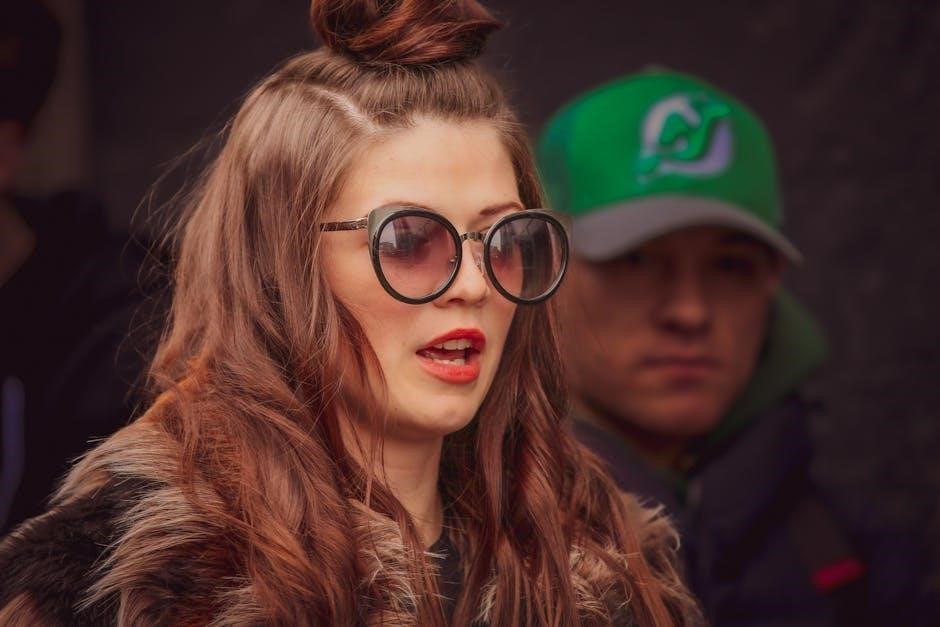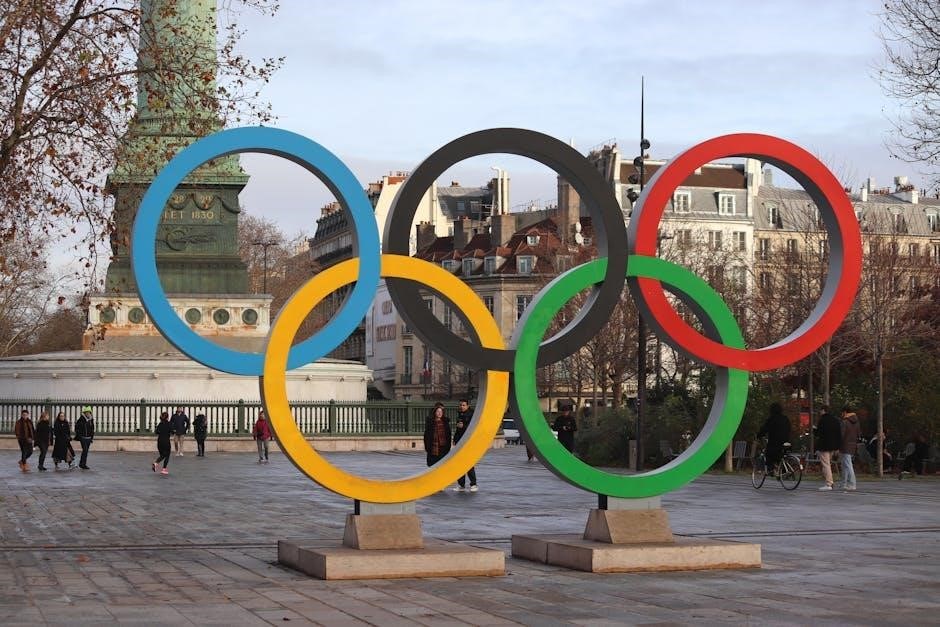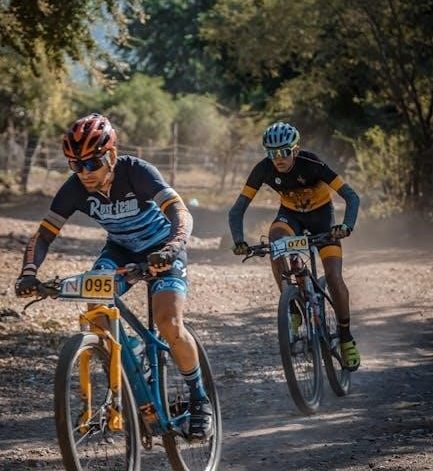The Potato Olympics is a fun, numeracy-based activity where students create potato athletes and participate in creative Olympic-style events, fostering teamwork and engagement while learning.

What Are Potato Olympics?
The Potato Olympics is a creative and engaging activity where participants design and train potato athletes to compete in various fun-filled Olympic-style events. Each potato is transformed into an athlete, often decorated and personalized, and students or participants take turns rolling, tossing, or racing their potatoes through challenges. This activity encourages teamwork, creativity, and problem-solving while adding a humorous twist to traditional sports. It’s a versatile event that can be adapted for classrooms, parties, or community gatherings, making it a unique way to blend learning with entertainment.
Origins and Purpose
The Potato Olympics originated as a creative way to engage students in numeracy and teamwork through fun, potato-based Olympic events. Developed by educators, it aims to make learning interactive and enjoyable. The purpose is to encourage students to explore mathematical concepts like measurement, counting, and fractions while fostering creativity and collaboration. This activity also promotes problem-solving skills and healthy competition, making it a valuable educational tool that combines learning with entertainment for students of all ages.

Key Events in Potato Olympics
The Potato Olympics features diverse, engaging events like Potato Bowling, Distance Race, Weightlifting, Spinning, and Ramp Run, each designed to be fun and educational for participants.
Potato Bowling
Potato Bowling is a popular event where students roll their decorated potato athletes toward a set of bowling pins or empty plastic bottles. The goal is to knock down as many pins as possible in a single roll. This activity encourages precision and strategy while fostering creativity, as students often decorate their potatoes with unique designs. The event is easy to set up, requiring minimal materials, and provides endless fun for participants. It’s a great way to combine physical skill with artistic expression, making it a highlight of the Potato Olympics.
Potato Distance Race
The Potato Distance Race involves rolling a potato down a ramp or incline, measuring how far it travels. Students design and test their ramp setups to maximize distance. Using a tape measure, the length of the roll is recorded. This event introduces concepts of motion and measurement while encouraging creativity in ramp design. Teams collaborate to refine their strategies, making it a fun and educational experience that combines physics with friendly competition.
Potato Weightlifting
In the Potato Weightlifting event, students test their potato’s “strength” by using stackable weights. The goal is to determine how much weight the potato can hold before toppling. Teams design a base or platform for their potato and carefully add weights, recording the maximum weight achieved. This activity introduces concepts of balance and weight distribution while fostering creativity and teamwork. Safety is emphasized, ensuring weights are light and setups are secure to avoid accidents during the competition.
Potato Spinning
In the Potato Spinning event, students flick their potato around the inside edge of a large circular tub. The objective is to count how many complete laps the potato can make. This activity introduces the concept of counting fractions in a fun and engaging way. Teams decorate their potatoes and carefully flick them, ensuring they stay within the tub. The event encourages precision and patience while adding an element of excitement to the competition.
Potato Ramp Run
In the Potato Ramp Run, students design a ramp using a chopping board or book and measure the distance their potato rolls. Teams create a ramp, release their potato, and record the length it travels. This event teaches measurement skills and encourages creativity in ramp design. Students can test and adjust their ramps to improve distance. The activity promotes teamwork and problem-solving while adding a fun, competitive element to the Potato Olympics.

Materials and Preparation
Essential materials include small potatoes, pens, stools, MDF boards, tape measures, and stackable weights. Prepare by setting up event stations, ensuring safety, and organizing supplies.
Essential Materials for Each Event
For Potato Bowling, gather 10 pins or empty bottles. The Distance Race requires a ramp, stool, and 3-meter tape measure. Weightlifting needs stackable weights, while Spinning involves a tub. The Ramp Run uses additional inclines and measuring tools. Decorate potatoes with markers, glue, and toothpicks for athlete profiles. Ensure all materials are safe, durable, and appropriately scaled for each event to maximize fun and learning for students. Proper preparation ensures smooth execution of all activities.
How to Set Up the Events
Organize events in stations, such as Potato Bowling, Distance Race, and Weightlifting. For bowling, arrange pins or bottles at a starting line. The Distance Race requires a ramp and measuring tape. Weightlifting needs stacked weights and a clear space. Spinning uses a tub for laps, while Ramp Run involves additional inclines. Ensure each station has a score sheet for tracking results. Assign supervisors to manage safety and fairness. Test setups beforehand to ensure smooth execution and maximum student engagement. Clear instructions and visible boundaries help maintain order and fun.

Teamwork and Engagement
Students collaborate by designing potato athletes, strategizing for events, and cheering each other on, fostering creativity, camaraderie, and a fun learning environment.
How Students Collaborate
Students work in groups to design and prepare their potato athletes, assigning roles like potato decorator and event strategist. They collaborate to create unique potato designs, drawing faces and names, and testing their potato’s performance in various events. Teams discuss and plan strategies for events like Potato Bowling and Potato Distance Race, ensuring their potato is optimized for each challenge. This fosters problem-solving skills, creativity, and mutual support, as students cheer each other on and celebrate their achievements together.
Encouraging Creativity and Fun
The Potato Olympics sparks creativity by allowing students to decorate their potato athletes with markers, hats, and accessories, giving them unique personalities. Students also craft imaginative backstories for their potatoes, fostering storytelling skills. Fun is amplified through lively events like Potato Spinning and Potato Dancing, where potatoes spin to music or race down ramps. These activities create a joyful, interactive learning environment, blending humor and excitement with educational goals, making the experience memorable and engaging for all participants.
Safety Guidelines
Adult supervision is essential, especially when using hot glue or sharp objects. Ensure students handle potatoes safely during events. Establish clear safety rules to prevent potential accidents.
Ensuring Safe Participation
To ensure safe participation, adult supervision is required during all Potato Olympics events. Students should handle materials like hot glue and sharp objects with care. Soft landing surfaces, such as cushions or mats, should be used for potato drops to prevent damage. Safety rules should be clearly communicated to all participants before starting activities. This helps minimize risks and ensures a fun, injury-free experience for everyone involved in the Potato Olympics.
Supervision and Safety Measures
Adult supervision is essential during Potato Olympics to ensure safety. Students should handle materials like hot glue and sharp objects with caution. Soft surfaces, such as cushions or mats, should be used for potato drops to prevent damage. Safety rules must be clearly explained before events begin. This structured approach minimizes risks and ensures a safe, enjoyable experience for all participants. Supervision helps maintain a hazard-free environment, allowing students to focus on creativity and teamwork while having fun with their potato athletes.
Scoring and Medals
Points are awarded based on performance in each event. Medals are designed and awarded to winners, fostering a sense of achievement and friendly competition among participants.
How to Score Each Event
Scoring is based on performance metrics for each event. For distance races, points are awarded by the meter rolled. Weightlifting scores depend on the total weight lifted. In spinning events, points are given for the number of laps completed. Creativity and design of potato athletes also earn bonus points. Judges tally scores, and medals are awarded to top performers. This system ensures fair competition and recognizes both skill and creativity, making the Potato Olympics engaging and rewarding for all participants.
Designing and Awarding Medals
Medals are custom-designed to celebrate creativity and achievement. Printable medal templates are available, featuring fun designs that match the Potato Olympics theme. Students can award medals to winners of each event, with categories like “Golden Potato” or “Most Creative.” Medals are presented during a closing ceremony, fostering a sense of accomplishment. This tradition adds excitement and motivation, making the event memorable for all participants while emphasizing teamwork and sportsmanship.




